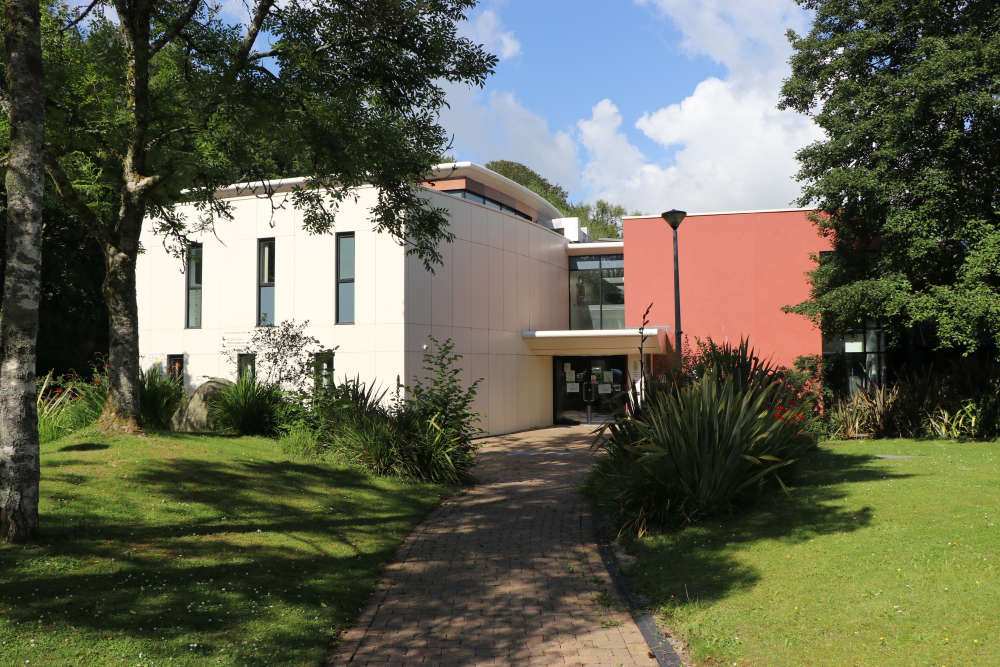
The development will also include a new village green.
The site, near to Exmouth Junction, is a long-term brownfield site which has historically been used as a railway goods yard, rail sidings and coal concentration yard, before most recently being used for surface storage.
The committee welcomed the redevelopment of one of the few remaining brownfield sites in the city and said that it needed to be of a high density as otherwise it could increase the demand for homes on green spaces.
The Eutopia Homes (Exeter) Limited scheme consists of 296 one, two and three-bedroom apartments built in three separate blocks of five storeys, and 104 four-bedroom three-storey townhouses.
A new ‘Village Green’ will be created in the centre of the site, providing a main focal point for the entire development, and will measure 3,300 sq. m and could feature areas for recreation, children’s play areas, benches, low-level planting, trees, and pathways.
The main vehicular access to the site will be from the existing roundabout immediately to the east of the site, adjacent to the Morrisons Petrol Filling Station.
Concerns though had been raised about Devon County Council’s request as Local Highway Authority to provide two pedestrian/cycle shared footpath links to the site through the Prince Charles Road allotments site.
Graham Yarwood, speaking on behalf of the allotment owners, said the currently proposed route would put the cycle path right through the allotments site and would strike at the heart of the community and divide it in two. He added that they were opposed to the provision of this path.
But Matthew Diamond, Principal Project Manager (Development) at Exeter City Council, said that the committee were only being asked to approve the principle of a cycle path through the site, and the exact detail of it and its location would be subject to separate planning applications.
Cllr Jane Begley, who represents the Pennsylvania ward, called for the scheme to be refused. She said: “It is positive that development is happening on a brownfield site but most of the objections around the density of the housing. A proportionate development would be welcome by all, but the density of housing is too much and it will bring pressure on the surrounding communities.”
She said there were concerns it would exacerbate the existing issues around parking, particularly as only 192 parking spaces are provided, and would have an impact on education and health provision in the area.
But Mr Diamond said that it was a low parking scheme designed specifically for just one space per house for the town houses and it had been designed to a high density.
Cllr Rachel Sutton enthusiastically threw her support behind the scheme. She said: “I welcome it and there is a lot to like. Change is never popular but this has been a derelict railway site for as far as I can remember.
“This is a residential development on a brownfield site. We have very limited sites left in the city that are capable for residential development. High density and high quality designs are very popular in Europe and we have to have new ways to thinking about developing this city.
“We have a chronic shortage of homes for people who want to live in the city. People in desperate need of better quality accommodation, people sharing bedrooms who cannot afford to get housing and accommodation, and this is an opportunity to change the quality of rented accommodation available.
“This is very important and we need to give it serious consideration. Allotments are not more important than people having good quality homes for their children. I will choose homes over allotments every time and won’t apologise for that. We have got to get this right but there is a lot to like in this.”
Cllr Emma Morse said that she did have concerns about the cycle link through the allotments, but were not at the level that would stop the application from being approved. She said: “This is not an attractive piece of land and a gift for us really when looking to develop sites. We need a high density as otherwise it puts pressure on the green spaces.”
Leader of the council, Cllr Phil Bialyk added that the council had further visions around high density housing in Exeter and that scheme was sustainable and appropriate and consisted of what would be a good mix for any community.
He added: “I would support this. This is a high class [development] and one we need in the city. There are a lot of people out there who want housing.”
Cllr Bialyk added that he would expect there to be a lot of consultation to take place with the allotment holders when the plans for the cycle link come forward.
Councillor voted by 10 votes to one to approve the outline application for the scheme, with a second application that deals with the details of the development still needing to be submitted and approved.
The housing mix is set to be configured with:
- Block A – 66 apartments (28 one-bedroom flats, 28 two-bedroom flats, and 10 threebedroom flats) across five storeys.
- Block B – 177 apartments (75 one-bedroom flats, 71 two-bedroom flats, and 31 threebedroom flats) across five storeys.
- Block C – 53 apartments (28 one-bedroom flats, 17 two-bedroom flats, and 8 threebedroom flats) across five storeys.
- 104 four-bedroom town houses (Use Class C3), each across three storeys.
- A 65-unit senior living with care facility (Use Class C2), configured over five storeys
- Creation of new public open and green space totalling 6,835 sq. m
- Creation of new pedestrian, cycle and vehicular access points to the site.
While only 192 parking spaces are set to be built with the development, the report says that a low car scheme is appropriate on the site given its close proximity to the city centre and the range of facilities and public transport options available there, while the total number of cycle spaces across the site will be 1,018.
 Students connect with elderly residents to combat loneliness
Students connect with elderly residents to combat loneliness
 Crackdown on anti-social behaviour in Plymouth
Crackdown on anti-social behaviour in Plymouth
 £1.6 million for more energy efficiency Devon home upgrades
£1.6 million for more energy efficiency Devon home upgrades
 SWW to build huge new Churston solar farm
SWW to build huge new Churston solar farm
 MP highlights Devon's dentistry 'crisis'
MP highlights Devon's dentistry 'crisis'
